Discovering smovey through Parkinson’s disease

The inventor of smovey and the Vibroswing-System is Johann “Salzhans” Salzwimmer. Full of energy and enjoying life, he was diagnosed with Parkinson’s disease at the end of the 1990s. He accepted his diagnosis, but known throughout the Steyr/Ennstal region as an outstanding tennis player and skier, he began to rapidly develop a method to stabilize his condition. The result of this research was the Vibroswing-System and the movement and lifestyle bearing the name “smovey.”
A healthy life following the example of Mother Nature: He has succeeded over the years to maximize his quality of life while minimizing his dependence on medicine. He also stays true to his mantra: “The power of fluid movement – and the strength of natural rest.”
In addition to the right medication, “exercise” has also been recognized as a substantial part of the therapy of patients with Parkinson’s disease. Through his own hardship and experience with this neurodegenerative disease, Johann Salzwimmer has created a movement device that not only helps him in maximizing his quality of life, but has also supported numerous other people with health issues. But let’s go back to the beginning and the creator of this device and role model for many people: Johann “Salzhans” Salzwimmer from Großraming in Upper Austria is a beacon of hope and role model for many Parkinson’s patients. As a successful innkeeper, tennis and ski instructor, he was firmly rooted in life when he was diagnosed with Parkinson’s disease in 1996. His health deteriorated drastically and everyday activities became a real challenge that he could only manage with difficulty. However, “Salzhans”, as he is called by many, never gave up. True to his mantra “I’ll only post a letter, but never postpone my life”, he persistently searched for possibilities to improve and stabilize his mobility.
Among other things, he noticed that his condition improved when he was playing tennis. He studied the serving technique of certain professional tennis players who took a few swings before smashing the ball over the net. Then it “clicked” for Salzhans: It was swings that might help him maintain his mobility in spite of Parkinson’s!
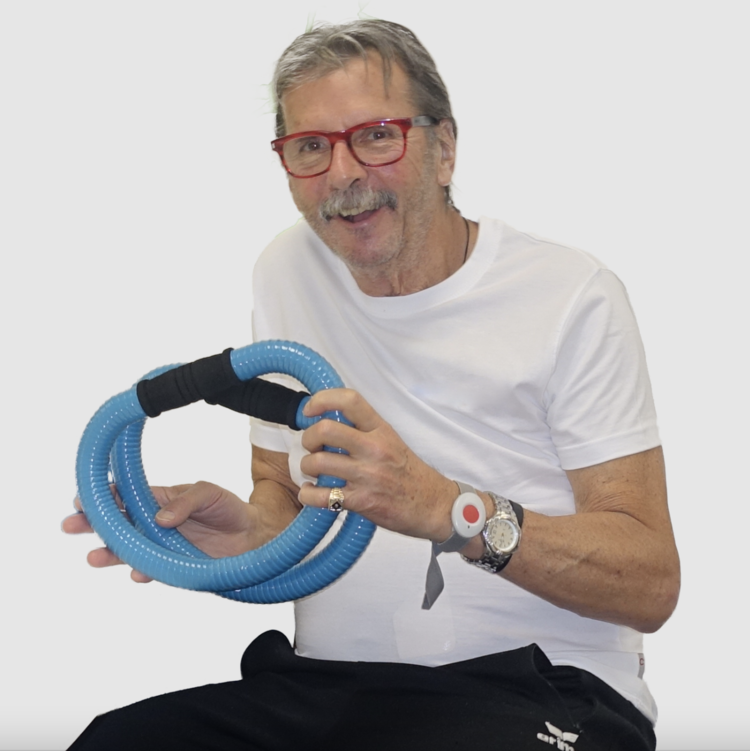
He experimented with tennis rackets, went for a walk with them, but he lacked momentum. He then attached a garden hose with free-running balls to the curve of the tennis racket that would increase the momentum and thus the effect., but he was not satisfied with the result. After an intense phase of trial and error, a corrugated pump-suction hose at the local plumber caught his eye. He took this hose home, filled it with balls and attached a makeshift grip: The first swing ring was born. Today the well-known swing rings called smovey are handmade by people with disabilities in a workshop in Weyer and help people around the world. The rings are used in health and therapy settings, but are equally popular for smoveyWALKING and fitness programs.
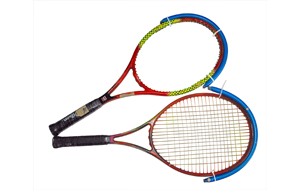
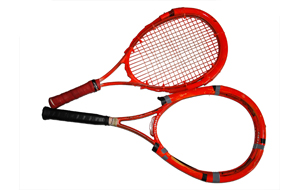
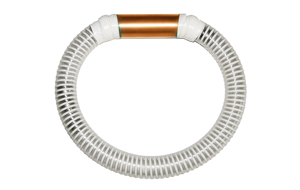
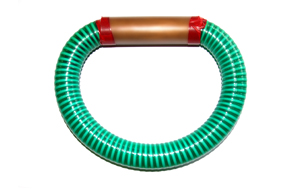
What do smoveys do?
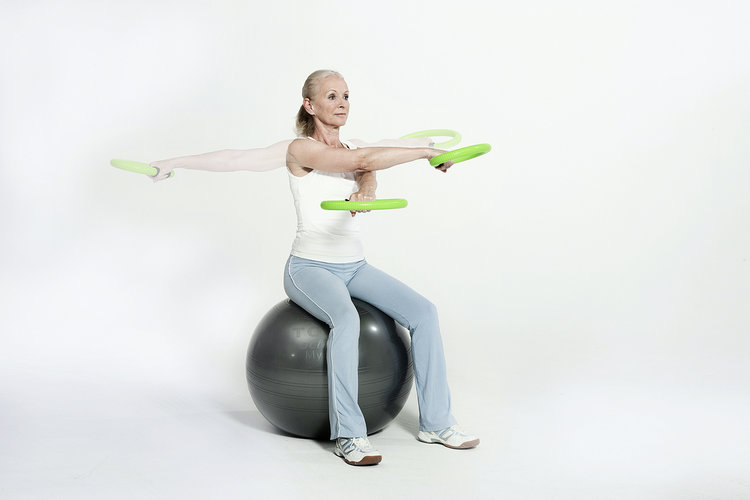
On the one hand, smoveys generate momentum and on the other hand, they generate vibrations. The four free-running steel balls on the inside of the corrugated tube create a vibration that is very beneficial for people. These vibrations reach and activate the deep muscles and the nervous system. The hand reflex zones transmit these fine stimulating and activating vibrations to the entire organism. Salzhans made use of precisely this effect and swung his rings for several minutes, multiple times a day.
The outcome: He was able to move more freely, experienced far less freezing, if at all, and was able to perform larger upward and sideward movements. He could also perceive an improvement in his gait; swinging his arms helped him with lifting his feet. Johann Salzwimmer died quite unexpectedly in February 2022 in his 76th year of life. He was full of courage and confidence to the end of his life and swung his beloved smoveys until shortly before his death. His invention and above all the people he got to know through it and who valued him and his life‘s work were his lifeblood and gave him motivation and drive to the end.
Johann Salzhans Salzwimmer was a role model for many people with his attitude and his mantra „not to give up“. The green rings have always helped him to maintain and even improve his quality of life – they have an effect beyond his life and support people all over the world to actively and self-design their mobility and health with joy and confidence!
Parkinson’s disease and moving with smovey
According to a study, Parkinson’s is one of the fastest growing forms of neurodegenerative diseases. In 1990, roughly 2.5 million people were affected, in 2016 this number rose to 6.1 million worldwide (Springer Medizin InFo Neurologie, 2019).
The causes for Parkinson’s disease remain largely unexplained; aging processes, genetic factors, oxidative stress are named as risk factors (Gerlach et al, 2007). It has been found that the dopamine-producing group of nerve cells gradually degenerates, creating an imbalance between neurotransmitters and causing the known movement disorders (Ludwig et al, 2007).
Common symptoms include motor changes such as slowing movements, tremor (shaking), muscle stiffness as well as freezing (difficulties starting to move), the tendency to fall etc. (Przuntek et al, 2002). In addition, various issues such as balance disorders, an impaired ability to swallow, incontinence and bladder weakness, digestive problems, memory disorders, may occur.
This is oftentimes the beginning of a downward spiral that may lead to serious psychological problems and even depression due to increasing insecurity, social withdrawal, self-doubts, shame, etc. (Ludwig et al, 2007).
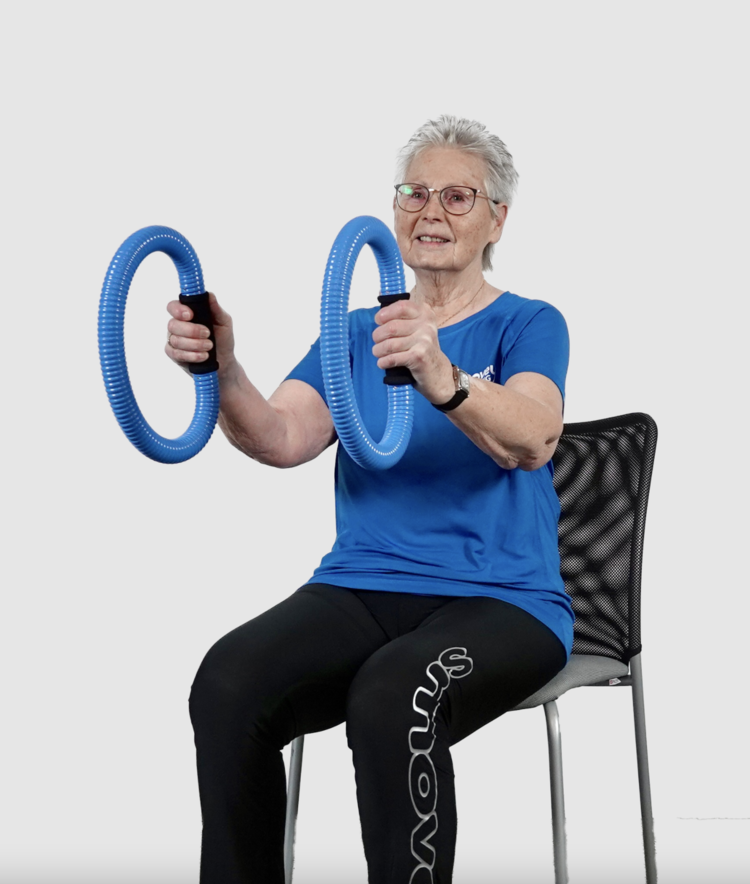
smovey and vibrations for Parkinson’s disease

Despite drug therapies and deep brain stimulation, essential functions such as walking, balance, talking, swallowing, cognition etc. cannot be improved in the long run for a large number of Parkinson’s patients. New approaches to activation such as dancing, Tai Chi, strength training show promising results for long-term care of Parkinson’s patients (Baumann et al, 2018). Exercise is thus an essential component of long-term therapy in Parkinson’s disease – but where does the strength of smovey lie? When using smovey with Parkinson’s patients, impressive changes with regard to posture, gait patterns (step size and walking speed) and stability could be observed or measured with short-term use.
The vibrations are generated by swinging the smovey back and forth – which sets them apart from motor-induced vibrations generated by an external source and transmitted to specific muscle groups at a constant frequency. The frequency of the smovey is not static, but changes depending on the speed of the swings, the radius, the model of the grip, etc.
The frequency spectrum of smovey is therefore not constant, but subject to continuous change and covers a range of between 0 and approx. 460 Hz. This means that the nervous system is permanently confronted with new impulses and stimuli, which it processes and which are detected by the sensory system.
The active movement of the smovey also stimulates the prefrontal cortex, the front part of the cerebral cortex responsible for the executive functions of the brain (planning, impulse control, cognitive control, etc.). Thanks to the centrifugal force and momentum generated during smoveyTRAINING large, expansive movements can be performed with great amplitude (BIG training). This is an essential part of therapeutic exercise for patients with Parkinson‘s disease, whose movements tend to become smaller and slower (Grust 2015). The balls rolling back and forth inside the tube provide positive, rhythmic auditory stimuli that directly improve gait quality, similar to metronome therapy for patients with Parkinson‘s disease (Enzensberger et al, 1997). Additionally, visual stimuli created by swinging the colored rings sideways provide a visual “limitation” of the area in which the patient moves and creates a spatial reference point.
The phenomenon of auditory and visual cueing is examined in detail in Ginis et al 2013. Haptic and tactile information is transmitted to the sensory cortex in the brain via afferent pathways and improves the processing of afferent information. In trainings with smovey, we pay particular attention to psychosocial aspects.
Training in a group increases people’s motivation and stamina. Joy as well as positive experiences result in an improved self-esteem. Especially positive experiences within a group are essential for the mental health of patients with Parkinson‘s disease and can contribute greatly to maintaining a good quality of life for as long as possible!


smovey VIBROSWING-System inventor Johann Salzwimmer Nickname “Salzhans”
with Bernd Zimmermann Representative of smoveyNorthAmerica

Videos
Click gear wheel symbol in bottom right corner of Youtube video below to select your language you want captions translated to
